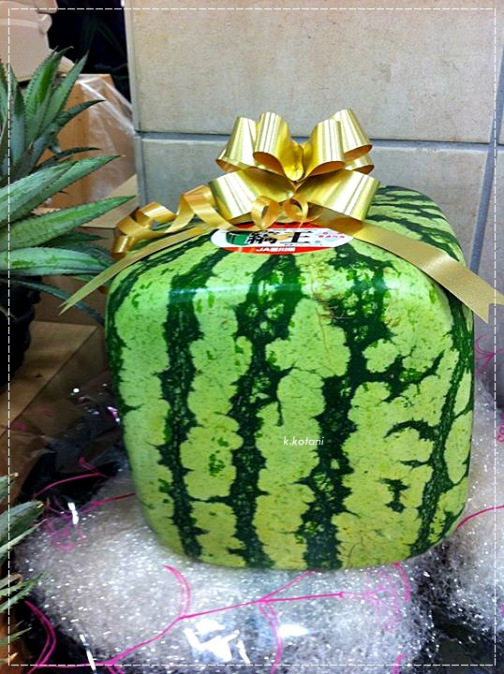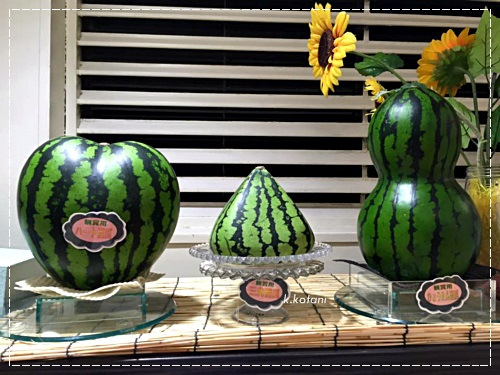Tokyo, Japan Feb. 23 Sun 12:29AM
Delicious, Sweet, and Unique
No one can deny the skill (and love) for quality and perfection possessed by the Japanese, but how good can it actually taste? Why is it so expensive? How are they grown into those various shapes? These are some common questions that arise when one first encounters the specialty fruit section of a high-end department store in Japan.
In general, Japanese fruit is much sweeter than the fruit you may be used to.
The sweetness is due to the selection and nurturing perfect seeds, pruning methods, and an overall obsession with quality.
Fruit as a Luxury Gift

Unlike vegetables, fruit is not considered an everyday item needed for eating, but more of a luxury. Because of this concept, fruit is commonly given as a gift to customers, business partners, or bosses. As for all gifts in Japan, appearance, quality and brand are of upmost importance and fruit is no exception.
Receiving a specialty watermelon from a famous store chain (such as Sembikiya) is like being given expensive jewelry, in some cases. Even the service and presentation in such a high-end fruit stores resembles that a designer jewelry store. Some of the melons cost $100 USD or more.
The High Cost of Quality
Like perhaps many others, I thought the exorbitant cost of these fruits was just another example of overpricing in general, especially in Tokyo. But it turns out there are some very legitimate reasons for the high price tag.
For one, appearance is very important and odd-shaped or blemished fruits are immediately discarded, regardless of taste. That means fewer melons actually make it market, thus increasing the cost.
But the main reason for high costs is labor. Each melon receives as much care as one might provide a newborn! Beginning with selecting perfect seeds, each melon is grown on it’s own vine assuring it will get as many nutrients and sweetness as possible. All aspects of care (soil, temperature control, pruning) are done with exacting precision. It’s an incredibly labor-intensive effort. Some growers are reported to give the melons ‘hats’ to prevent sunburn!
Squares, Hearts and more

As will become readily clear upon visiting a specialty fruit vendor, the more odd the shape, the more expensive the melon will cost. The cube shape has been on the market for some years now and is the most common. One reason for its popularity is that a square shape can fit nicely into Japanese refrigerators, which have limited space. It’s also easier to stack which is good for shipping.
To make the square shape, the melon is placed inside a glass cube when young and as it grows, it fits to the shape of the container. The heart-shaped ones are a bit trickier and can take years to perfect, another reason for the price. They even have melons now shaped like human faces!
If budget is a factor and not concerned about exotic shapes, you can always find naturally shaped melons in supermarkets for reasonable prices. They are still much higher quality than what you may be accustomed to and still quite sweet!
The watermelons of Japan are a great example of the nation’s love for quality, appearance and playfulness.
